What is a Dental Inlay?
A dental inlay is like an expanded version of a filling. It covers a tooth’s biting surface and is performed on your back teeth. The difference between onlays and inlays involves the area of the mouth your dentist needs to work on. An onlay covers the top or side part of the bicuspid, while an inlay covers the grooves or fissures between the teeth. The biggest culprit that makes this procedure necessary is tooth decay or neglecting a cavity for too long.
When are Inlays necessary?
There are times when teeth are damaged or weakened beyond needing a simple dental filling. Luckily, a dental inlay is considered a moderate procedure usually used in these situations at Wheatland Dental. Inlays are performed when the damage is not extensive enough to require a crown.
When might a dentist recommend an inlay?
At Wheatland Dental our dentist may recommend an inlay for one or more of the following reasons:
- When there is too much damage to the surface of your tooth for a filling.
- When you have cracked or weakened teeth that could fracture with a filling.
- To prevent loss of a tooth’s functionality.
- When the damage to the tooth is not extensive enough for a crown.
What to Expect With Your Dental Inlay Procedure
An inlay procedure in Naperville is performed by our general dentist at Wheatland Dental. Typically, there are at least two appointments to complete an onlay or inlay procedure. Onlay and inlay procedures are similar.
The first half of the inlay procedure requires a local anesthetic. Once you are numb, the dentist at Wheatland Dental will clean the damaged spot. Our dentist may use a drill to clean out the tooth’s problem area. Once the tooth is cleaned, the dentist will take an impression of your tooth, which will be sent to a laboratory to create the onlay or inlay. The permanent inlay should arrive in one to two weeks. Our dentist will put a temporary inlay in place at this visit.
After your first appointment, there will be a loss of sensation from the numbing agents. To avoid damage that might require an additional dental visit:
- Do not eat until all feeling returns to your mouth.
- Do not floss with your temporary inlay and brush your teeth gently.
- Avoid foods that are hard or sticky, or too hot or cold.
- If your dental inlay is displaced or broken, make an appointment with your dentist.
When your inlay comes back from the lab, you will have your second appointment. The temporary inlay will be removed, and then the tooth will be cleaned again. We will place and cement the inlay and ensure you have a good fit.
What are dental inlays made of?
There are three common materials used to construct an onlay or inlay:
- Composite resin, which consists of quartz and acrylic. Composites match a tooth’s color.
- Metals, such as Dental Gold, are durable and can last 10-15 years. Metal is less popular, as it doesn’t match the tooth color.
- Porcelain and ceramic are also favored for their durability and color-matching properties.
A dental inlay is a solution falling between a filling and a crown. Inlays are used to prevent tooth loss after decay, cracking, or weakening of the teeth. To avoid the necessity of inlays, brush and floss your teeth regularly, eat healthily, and visit our dental office consistently. Schedule an appointment today to make sure your teeth remain healthy.

